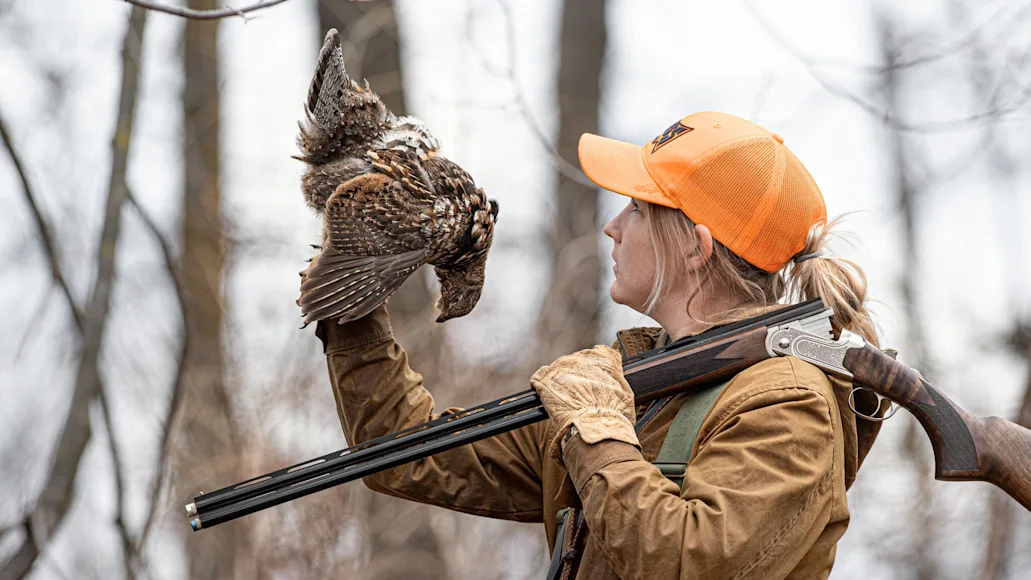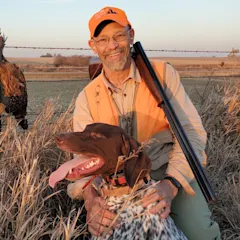Every state in the U.S. has an upland hunting season. From grouse in Maine to an assortment of non-native pheasants and other birds in Hawaii, America is home to a wide variety of upland birds. While “upland” is defined as “high or hilly land,” that description fits some upland habitats better than it does others. Upland birds live in habitats ranging from mountaintops to marshes. Seasons begin in September in the northern prairies and run into February in the southwest. And, while upland bird populations are stable in some areas, declining in others, and nearly gone in more, there is a wealth of hunting to be found in the United States if you go where the birds are. Here’s what you need to know to get started.
Upland Hunting Table of Contents
What is Upland Hunting?
Why Upland Birds Matter
Species of Common Upland Birds You Can Hunt
5 Things to Consider Before Hunting Upland Birds
Best Upland Hunting Gear for Beginners
How to Choose an Upland Hunting Gun
3 Necessary Upland Hunting Skills
What You Need to Know About Upland Hunting Dogs
Our Favorite Recipes for Upland Birds
Frequently Asked Questions About Upland Hunting
What is Upland Hunting?
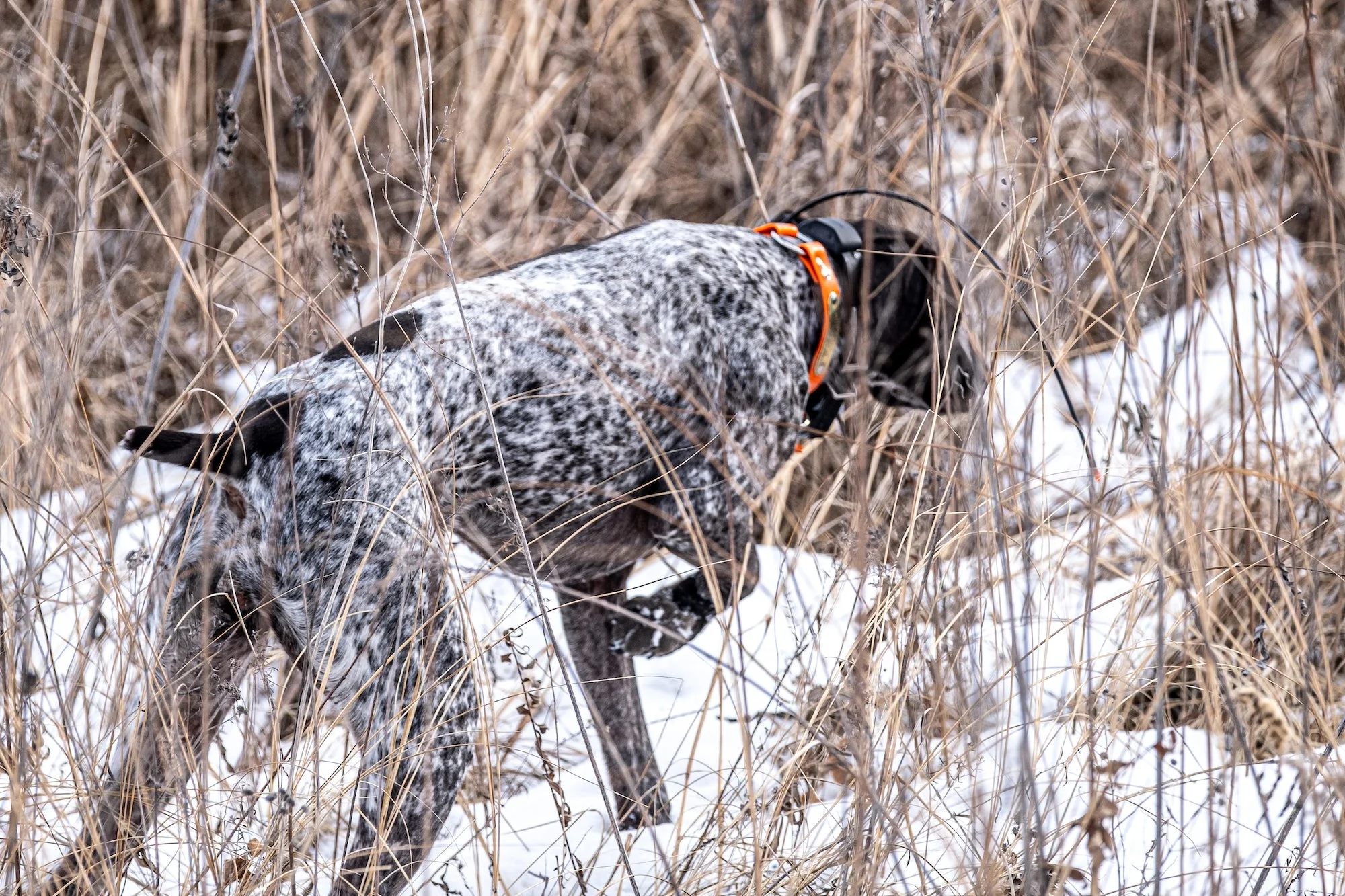
A bird dog freezes “on point” as she smells a bird. Federal Premium Ammunition
The beauty of upland hunting lies in its simplicity. It’s a walk with a gun. Your goal is to frighten ground-dwelling birds into flight, so you can shoot them. Even if you don’t find anything, you’ve had a walk in a wild place when it’s over. When you do find birds, the jolt of excitement you feel as an unseen bird blasts off at your feet is only matched by the tasty reward of upland birds on the table.
In order to thrive, upland birds need lots of room. They need food, cover to nest in, and shelter from winter weather. Habitat requirements vary by species, of course. The common denominator is space and a healthy landscape to produce upland birds. That’s what you’re looking for, whether its farm fields interspersed with grass and brush for pheasants, bobwhites, or partridges, expanses of grassland for prairie grouse, expanses of desert or savannah for southwestern birds, or mixtures of young and old forest for grouse and woodcock.
Why Upland Birds Matter
When forests mature or are cleared, when prairie is broken, or when modern agriculture irons out all the wrinkles in the land, birds have no place to live. Upland birds matter not just for themselves, but because they are indicator species. The grasslands that support so many birds are also home to pollinators. Young forests are vital to ruffed grouse, and to a wide variety of songbirds. All of these habitats need help, and no one is more aware of that than the hunter who ventures into them. When you take up bird hunting, you become a member of a community that is an important voice for conservation.
Species of Upland Birds You Can Hunt
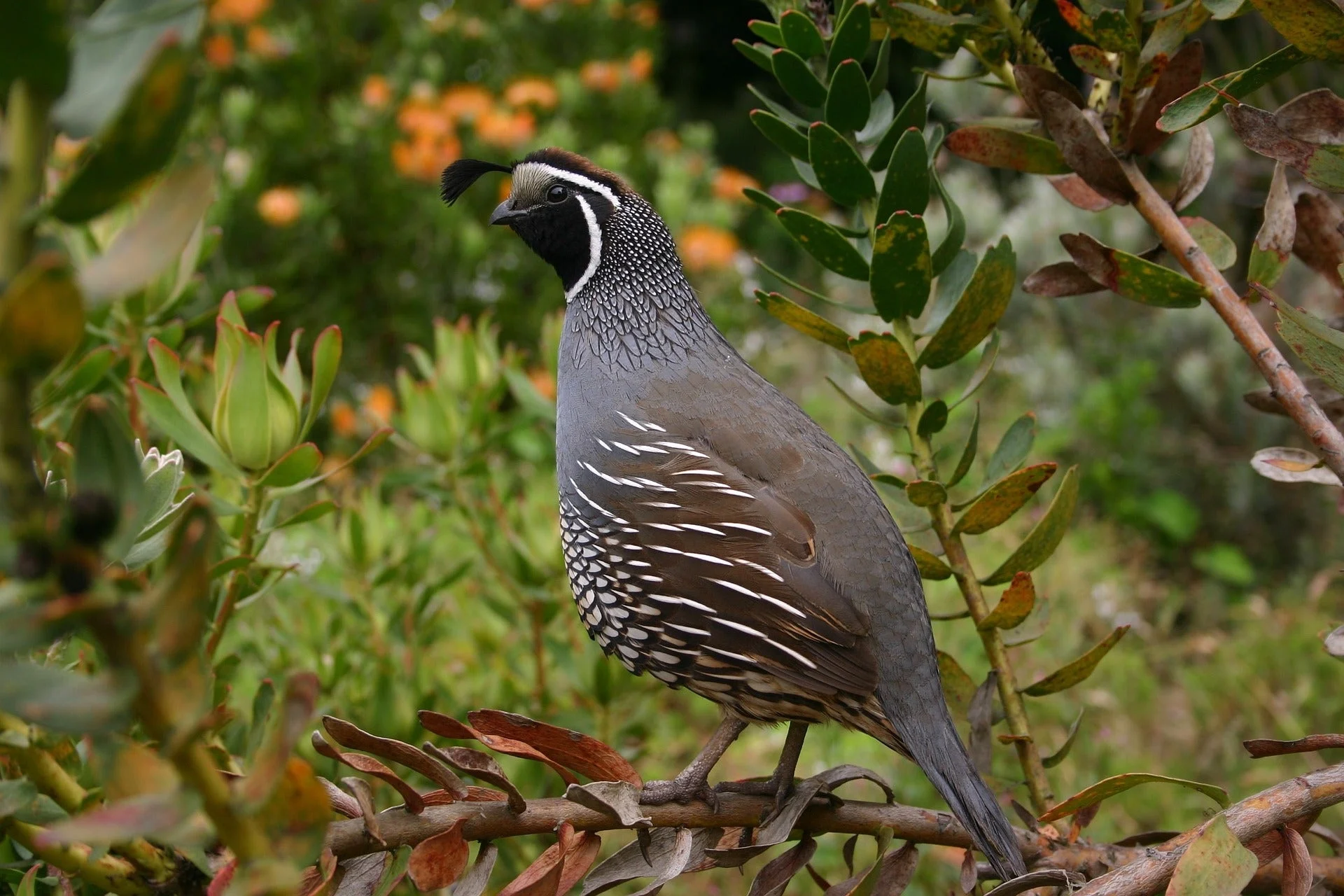
A California quail sits on a branch. Sean Echelbarger from Pixabay
North America is home to 20-some native and successfully introduced upland gamebird species. Although doves and band-tailed pigeons are classed as upland birds, they are hunted more like waterfowl, by pass-shooting or decoying. We’ll confine this list to the most popular birds that are walked up, flushed, and shot.
Ringneck Pheasant
The best import from China ever, the ringneck pheasant was first stocked in Washington state in the 1880s and is found across the northern US in grass and agricultural lands. Pheasants do best in farm country mixed with grasslands and heavier winter cover like cattail marshes.
Ruffed Grouse
Our most widespread native gamebird, the ruffed grouse lives in young forests where thin, densely-packed trunks protect them from predators and they can find buds and leaves to eat. Ruffed grouse thrive in the Great Lakes states and in the northeast, especially Maine.
Bobwhite Quail
Not much in upland hunting is more exciting than having a covey of ten or fifteen bobwhites buzz up from underfoot. Quail hunting was a way of life in the south until modern agriculture wiped out their habitat. Today, the bobwhite’s stronghold is in Texas, Oklahoma, and Kansas.
Woodcock
A shorebird adapted to the uplands, woodcock use their long bills to probe for earthworms and fly south as the ground freezes. They are often found in the same type of brushy, young-forest cover that holds ruffed grouse. They inhabit the eastern third of the United States.
Chukar
Another successful import, this one from the rugged mountains of Afghanistan and Pakistan, chukar live in high, rocky places in the west, Oregon and Washington, Utah, Idaho, throughout Nevada, and in parts of California, where there are vast amounts of public hunting opportunity. Chukar hunting is a workout, and the shooting is tricky. These birds are earned.
Gray Partridge
The third import that made itself at home in the U.S., the gray or Hungarian partridge is a bird of wide-open spaces that found Montana, Wyoming, the Dakotas, Minnesota, and parts of Iowa, and southern prairie Canada to their liking. Coveying birds, they often flush at longer ranges.
Sharptailed grouse
The most popular of the prairie grouse species, sharptails prefer short-grass prairie. They are found in parts of Minnesota, Nebraska, the Dakotas, Montana, Wyoming, and in Canada. Sharptail seasons open in the heat of September and for many upland hunters, a trip to the public grasslands for sharptails marks the beginning of the upland year.
Mearns Quail
Hunting small coveys of Mearns quail in the rugged grass and oak savannahs of Arizona and New Mexico is demanding, and well worth it. The males are among our most strikingly colored gamebirds and, like all quail, they make great eating.
Gambel’s Quail
Both hens and roosters of the species wear striking topknots. They live in the Sonoran desert of the southwest, where they are as likely to run as to fly from hunters.
Scaled Quail
Also known as the blue quail, the scaled quail, like the Gambel’s, lives in the desert where everything is sharp. Both males and females have distinctive crests.
California Quail
Found in California, Oregon, and Washington and down into Mexico, California (also “desert”) quail resemble the Gambel’s, with a similar bobbing topknot. It prefers broken chaparral, woodland edges, and coastal scrub. They have adapted well to living quite close to people and are often seen in suburbs, parks, farms.
Mountain Quail
The largest quail in North America, the Mountain quail, as its name suggests, prefers higher elevations and either chapparal or brushy forest habitat—although it moves to lower elevations during the winter. It’s a bird of the west, living in California, Oregon, and Washington.
5 Things to Consider Before Hunting Upland Birds
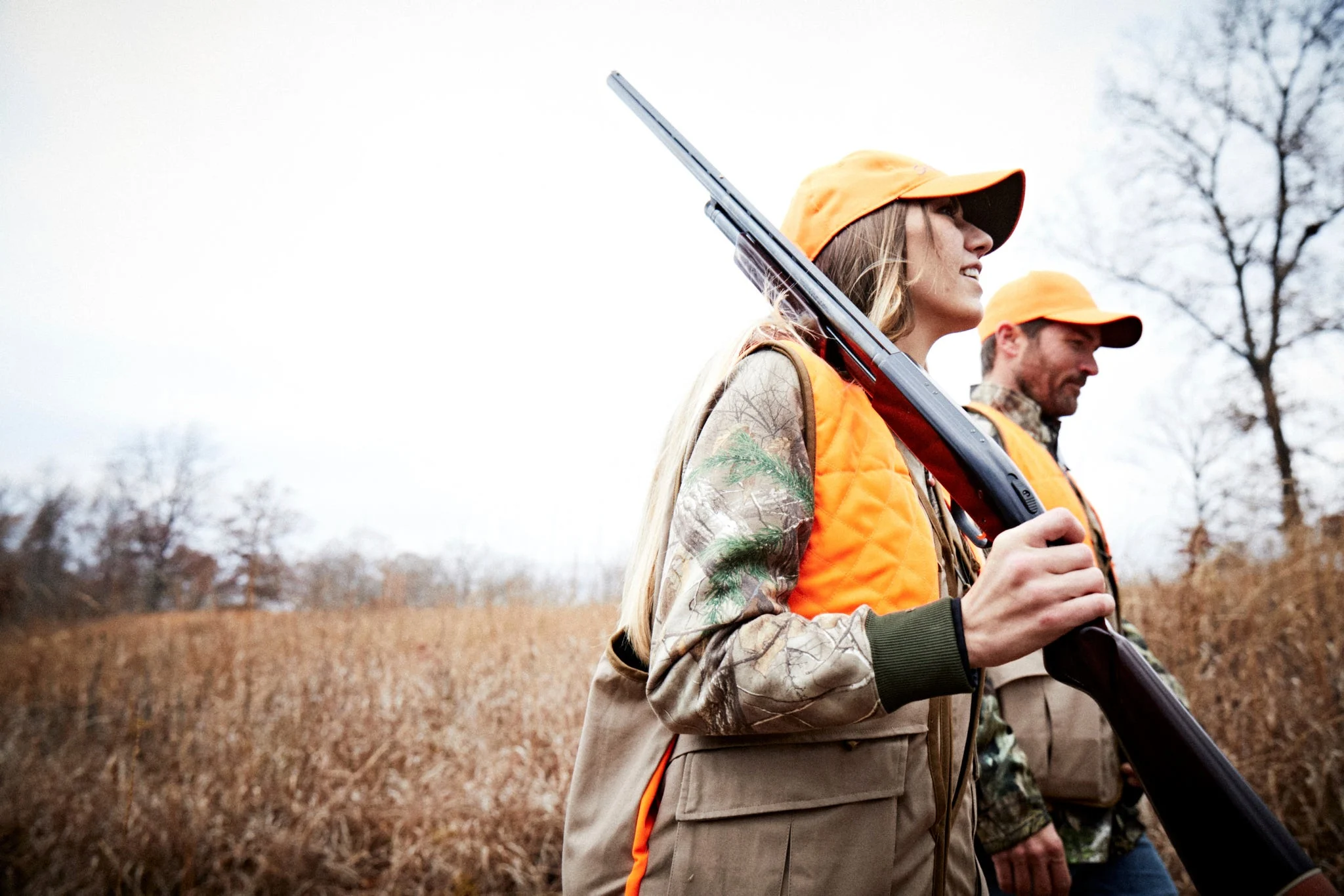
Wearing a blaze orange cap and vest is always a good idea. Mossberg
1) Game Laws, Restrictions, and Legal Requirements for Upland Hunting
Before you venture into the uplands, it’s important that you know the rules. Bag limits and shooting hours vary by state and don’t assume laws are the same if you travel to hunt. Kansas and Nebraska hunters can start hunting pheasants half an hour before sunrise. South Dakota hunters have to wait until 10:00 a.m. for instance. And, while non-toxic shot is universal for waterfowl, it is required in some places and not in others for upland hunting. Likewise, states have different laws about whether a gun needs to be cased a in vehicle. Familiarize yourself with the game laws wherever you’re planning to hunt.
2) Hunting Safety
Most states require blaze orange caps and garments for upland hunting, and even if they don’t, you should wear them. Upland hunting requires quick shoot/don’t shoot decisions. Those are easier to make when you can easily see every member of your hunting party. A good rule of thumb to protect both people and dogs in the field is to only shoot if you can see sky below your target.
As you walk, you’ll need to be aware of your muzzle, as well. Up is by far the safest direction to keep it pointed. Unload your gun when you cross obstacles like fences or stone walls, too.
3) Upland Hunting Seasons
We hunt upland birds in the fall and into winter. States set their own seasons. Some actually close upland seasons during firearms deer season to reduce hunter conflict in the woods and keep people and dogs safe. Some don’t, but prudent hunters often give the deer hunters the woods at that time, or hunt deer themselves. If you’re willing to travel, you can start hunting sharptails in the Dakotas in September, and finish up with desert quail in Arizona in February, and find open seasons all through that time.
4) Stocked Upland Birds vs Wild Birds
Some states stock birds in WMAs, usually pheasants to augment wild populations or because they have no wild birds left. Shooting preserves sell hunts for released pheasants, chukar, and quail, and enjoy a very long season running from September 1 to March 31. A good hunt for released birds can be almost identical to hunting wild birds. A bad hunt, not so much, and I prefer wild birds over even the best preserve experience. Preserves do present great opportunities for teaching newcomers to hunt or for working a bird dog. For many people who live in places where there are no wild birds, released birds are the only upland game around, and it does help keep the tradition alive.
5) Hiring an Upland Hunting Guide
A guided hunt is a good way to learn how to hunt birds. The guides will have places to go, expertise, and dogs, all of which increase the chance for success. As the client, your job is to be safe, to learn, to shoot the birds, and to have a good time. Likewise, paying for a day of preserve hunting is a good way to learn the basics and get some experience shooting at flushing birds.
Best Upland Hunting Gear for Beginners
Upland Hunting Boots

These Danner Recurves are great upland hunting boots. Danner
Upland hunting means walking. Boots, you could argue, are the single most important piece of gear you will buy. Depending on where you hunt, your needs will vary. For most people, an 8-inch leather or leather-and-Cordura boot with minimal insulation and some waterproofing works best. A boot has to support your ankles on broken ground, prevent sharp things from poking your feet and help keep you dry.
If you hunt low areas, and flat fields that might be muddy, rubber kneeboots might be all you ever need. As a flatlander who primarily hunts pheasants in grass and cornfields, all I ever wear are rubber boots, which have the huge advantage of keeping my feet 100% dry wile requiring very little care.
Upland Hunting Vest and Jacket
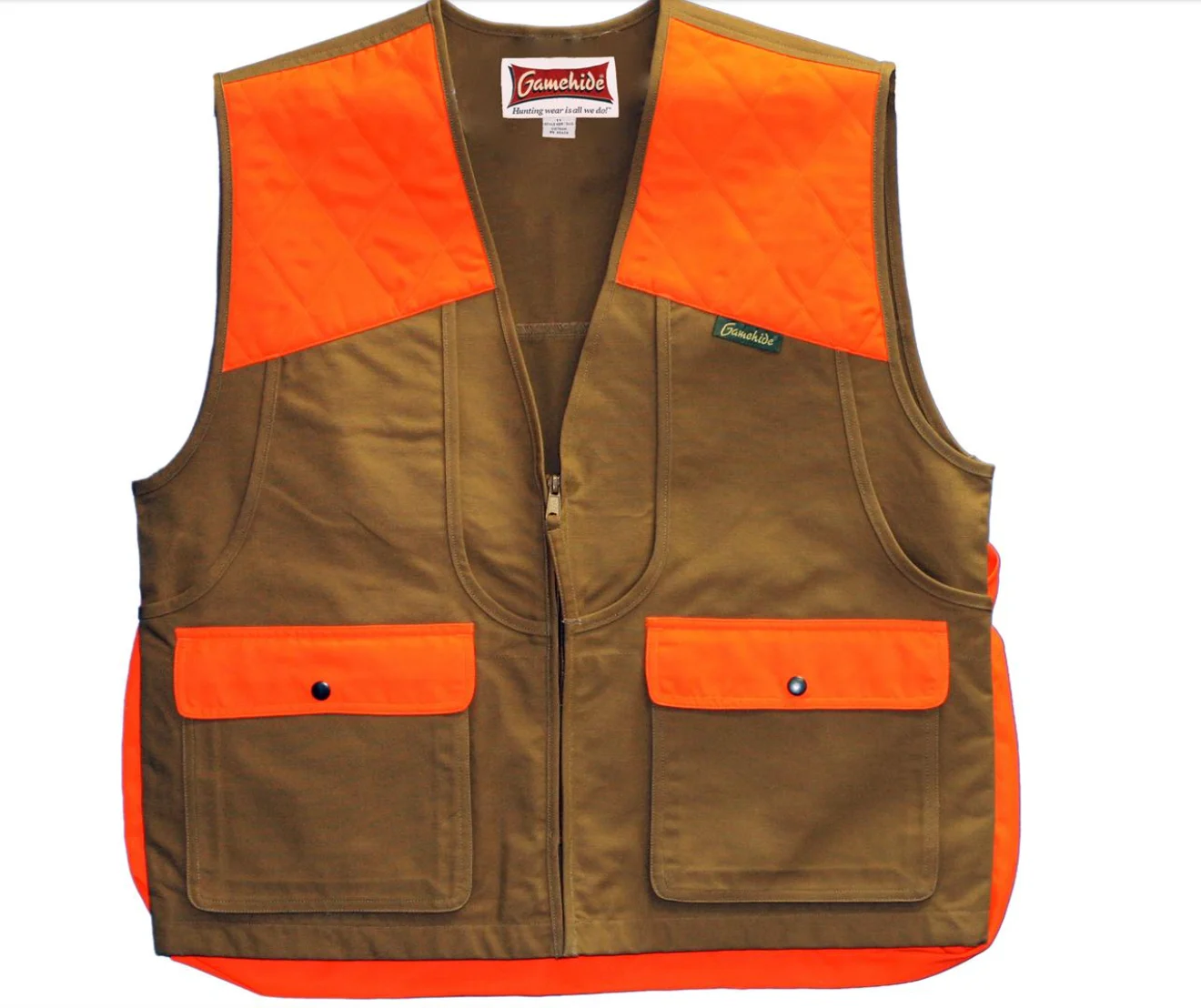
Get an upland vest with plenty of orange on it and enough room for birds and shells. Gamehide
An upland vest or coat carries your live shells and your dead birds as well as water, a leash, an extra layer, gloves, a snack, whatever you need for as long as you’ll be away from the truck. Unless it is very cold and windy, I prefer a vest to a coat for the freedom of movement it allows. You can layer a vest over warm clothing, too. Vests come in two kinds: the traditional sleeveless coat, and a strap vest, in which the game bag and pockets are suspended by shoulder straps. Both work and are a matter of preference. The vest should be all or partially orange for safety, and the traditional style does have the advantage of covering your upper back and shoulders with orange, where it’s easy to see even above tall grass.
Be sure the vest you choose has a big enough game bag. As a pheasant hunter, I am particular on that point, since a limit of three pheasants takes up a lot of room. A vest also needs easily accessible pockets for your shells, and some hunters like pockets with shell loops inside in case they want to bring more than one load into the field and keep them separate.
Upland Hunting Pants
Upland pants take a beating, and they can save your legs from a beating, too. Most upland pants feature some type of briar-resistant facing, which is especially useful in brushy cover. They can help keep your legs dry in tall, wet grass, too. Briar chaps that slide on over pants and boots and attach to your belt make a good alternative to brush pants.
Other Upland Hunting Gear
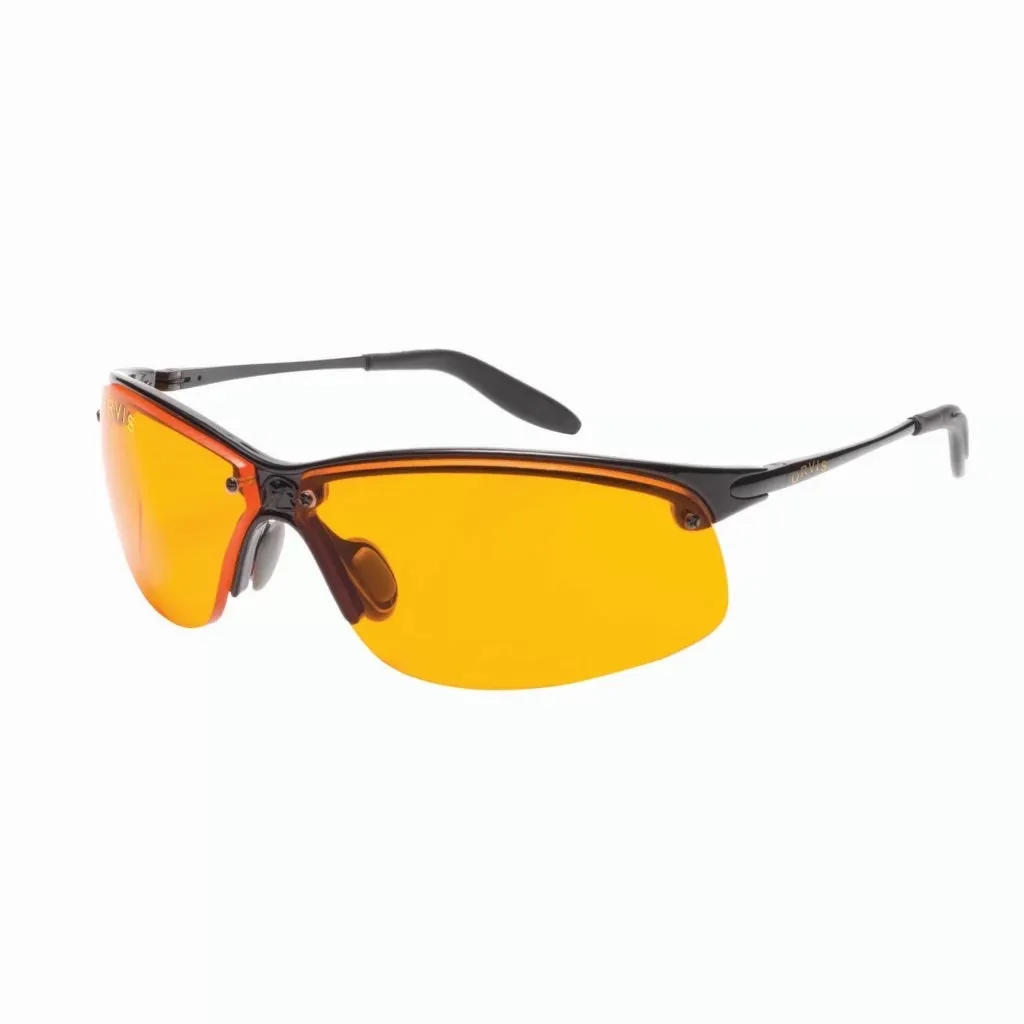
It’s a good idea to wear some kind of protective glasses when upland hunting. Orvis
Thin leather gloves allow you to shoot while offering protection to your hands, and shooting glasses can both help you see birds better. A reddish-orange tint is a good all-around color for enhancing your vision in the field, and the lenses can protect you from a stray pellet or a stick in the eye.
In general, when you dress for upland hunting, think layers so you can add or subtract them in the field. Also, be particular when you choose clothing. A lot of upland clothes are too heavy and will make you overheat. The old advice about how to dress for a day in the uplands is that you should feel slightly cold when you first start out, because you will warm up as you walk. That usually holds. Often, I’ll start out in a knit beanie and gloves, and shed both as I warm up, or I wear a fleece vest under my bird vest and stash it in the gamebag later on.
But, I’ve also been on hunts where I was little bit cold at the start, and increasingly miserable as the hunt went on. That’s usually true only on the very coldest days, however. Most of the time, you’ll be happier dressed in light layers you can add or remove.
How to Choose an Upland Hunting Gun
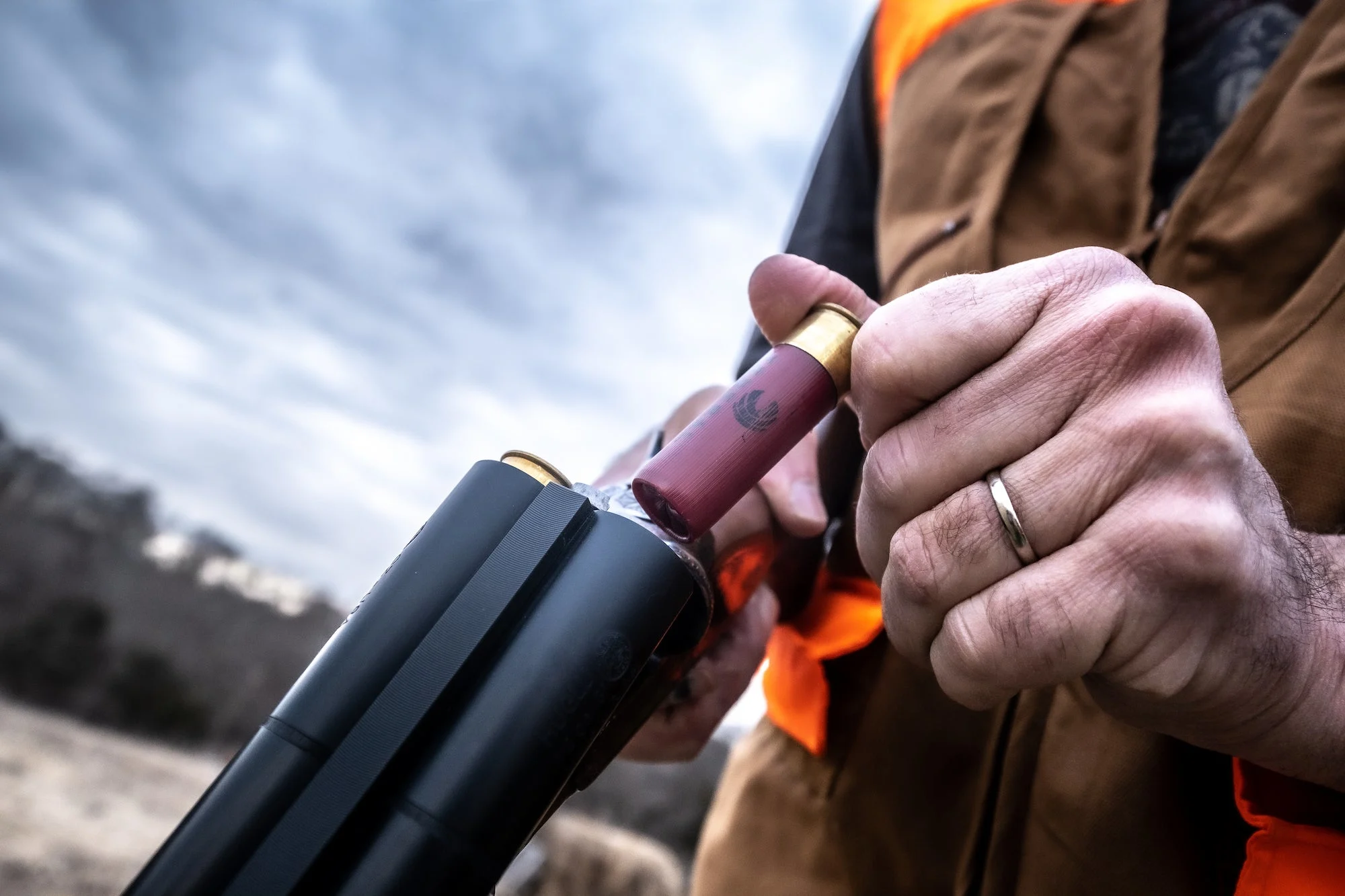
Pick a shotgun that’s light to carry with enough weight to shoot well. Federal Premium Ammunition
An upland gun should be light enough to carry, yet heavy enough to shoot well. It should have fairly open chokes, because most types of upland hunting involve shots inside 30 yards. A 12-, 16- or even a 20-gauge makes a good all-around upland gun, and a 28-gauge works if you skip the long shots. Many hunters like short-barreled guns with 26- or even 24-inch barrels. They believe the guns are faster to the target and handier in brushy cover. Others, like me, prefer 28-inch barrels as being smoother to swing. Here are a few examples below, but If you’d like to learn more about upland hunting guns, check out our story on the best upland hunting guns ever.
Pump Action: Mossberg 500
You don’t have to spend a lot of money on an upland gun. The Mossberg 500, with its alloy frame, doesn’t weigh much, even in 12 gauge, and it’s even lighter as a 20. The Mossbergs I’ve seen lately have been slick right out of the box. I’d splurge on the Retrograde Field Model, with its walnut stock and corncob forend, but there’s nothing wrong with the All-Purpose hardwood-stocked field gun, either.
Break Action: CZ Bobwhite
If you’re traditionally minded, the CZ Bobwhite G2 deserves a long look. It’s an absolutely bare-bones side-by-side gun at a price so low you won’t mind carrying it into the thick stuff. It has extractors that elevate shells rather than kicking them out like ejectors, making it a little easier not to litter in the field. And, with a bit of practice, you’ll find its double triggers allow you to choose which barrel you fire instantly. The Bobwhite G2 breaks with tradition by having choke tubes and being rated for steel shot, unlike some older and/or fancier double guns, and that trait makes it more versatile. It comes in 12, 20, and 28-gauge.
Semiautomatic: Browning A5 Sweet 16
An instant hit when it came out just few years ago, the Sweet 16 is a very light-weight semiauto. At under 6 pounds in 16 gauge, it’s easy-carrying and hard-hitting. It shares the name and lines of an upland classic, the Browning Auto 5 Sweet 16, but it’s an entirely different design. It has sparked a small 16-gauge revival practically by itself.
3 Necessary Upland Hunting Skills
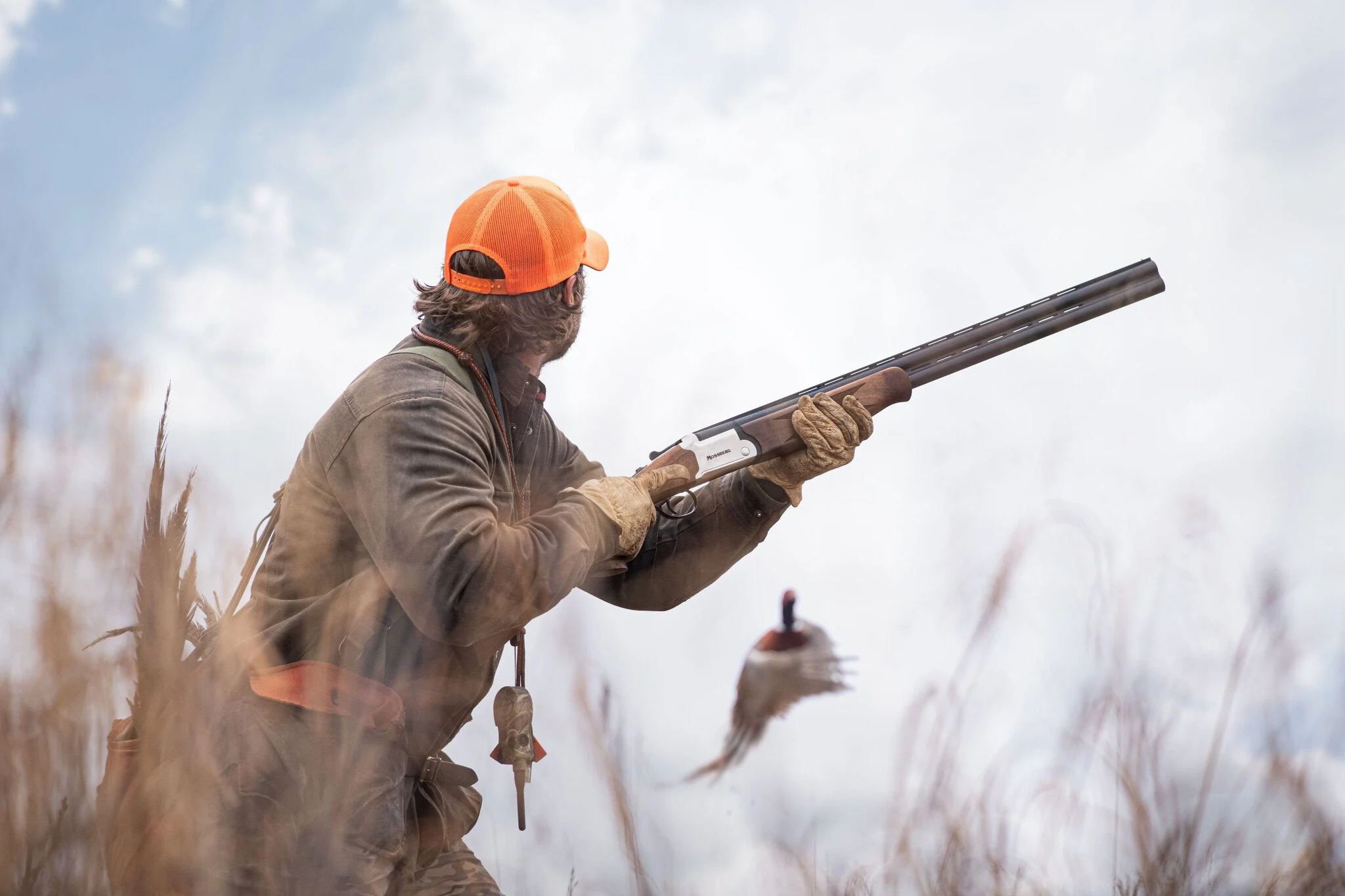
Learn to shoot before you hit the uplands. Mossberg
There are three main requirements for being a successful upland hunter:
1) You Have to Find Places to Hunt
Upland bird hunting requires lots of ground. There is no way around it. Some places offer an abundance of public land to hunt. In others, you’ll have to get permission to hunt private land, pay for access, or buy your own land. To be a successful upland hunter, you have to look for new places to hunt all the time.
2) You Have to be in Shape to Walk
If you can’t cover ground, you can’t hunt birds. Some birds, like chukar in the west, Mearn’s quail in southwest, and mountain quail in California, inhabit steep and sometimes rocky hills. Even a walk in the flat farmlands where pheasants live can be difficult if there’s deep snow, or the birds are tucked into marshy cover. Walk, bike, or run in the off-season.
3) You Have to be Able to Shoot
Become a regular at the gun club in the summer. Skeet with a low-gun start makes great practice for hunting, as does sporting clays. Trap teaches you to hit the going-away targets common to upland hunting. Even practicing with a portable trap helps some.
Read Next: How to Shoot Trap, Skeet, and Sporting Clays
What You Need to Know About Upland Hunting Dogs
You can hunt upland birds without a dog. I used to walk up pheasants, woodcock, and grouse with some success. The dogless hunter has to go into the thick places themselves. They have to walk slowly and stop often to unnerve sitting birds. They can employ tactics like posting blockers and walking toward them to force birds to fly. You will get birds hunting this way, and you’ll have none of the headaches, expenses, or heartbreaks of owning a dog, which, I am here to tell you, are many. As I write this, my German shorthaired pointer, Zeke, is recovering from a surgery that cost me the price of a new O/U shotgun.
Even so, I would never hunt upland birds without a dog again. A dog’s nose is literally one million times more sensitive than ours is. A dog will find more birds for you to shoot, and it will recover those birds. Dogless hunters might not retrieve 3 out of every 10 birds they shoot. Last year, my crippling loss on pheasants, hunting with my dog, was 5 percent.
Perhaps the very best route is to hunt with someone who has a good dog. Once you’ve hunted with your own dog, though, you won’t even want to do that. Owning a dog makes upland hunting a richer, more rewarding activity than you ever imagined in your dogless days.
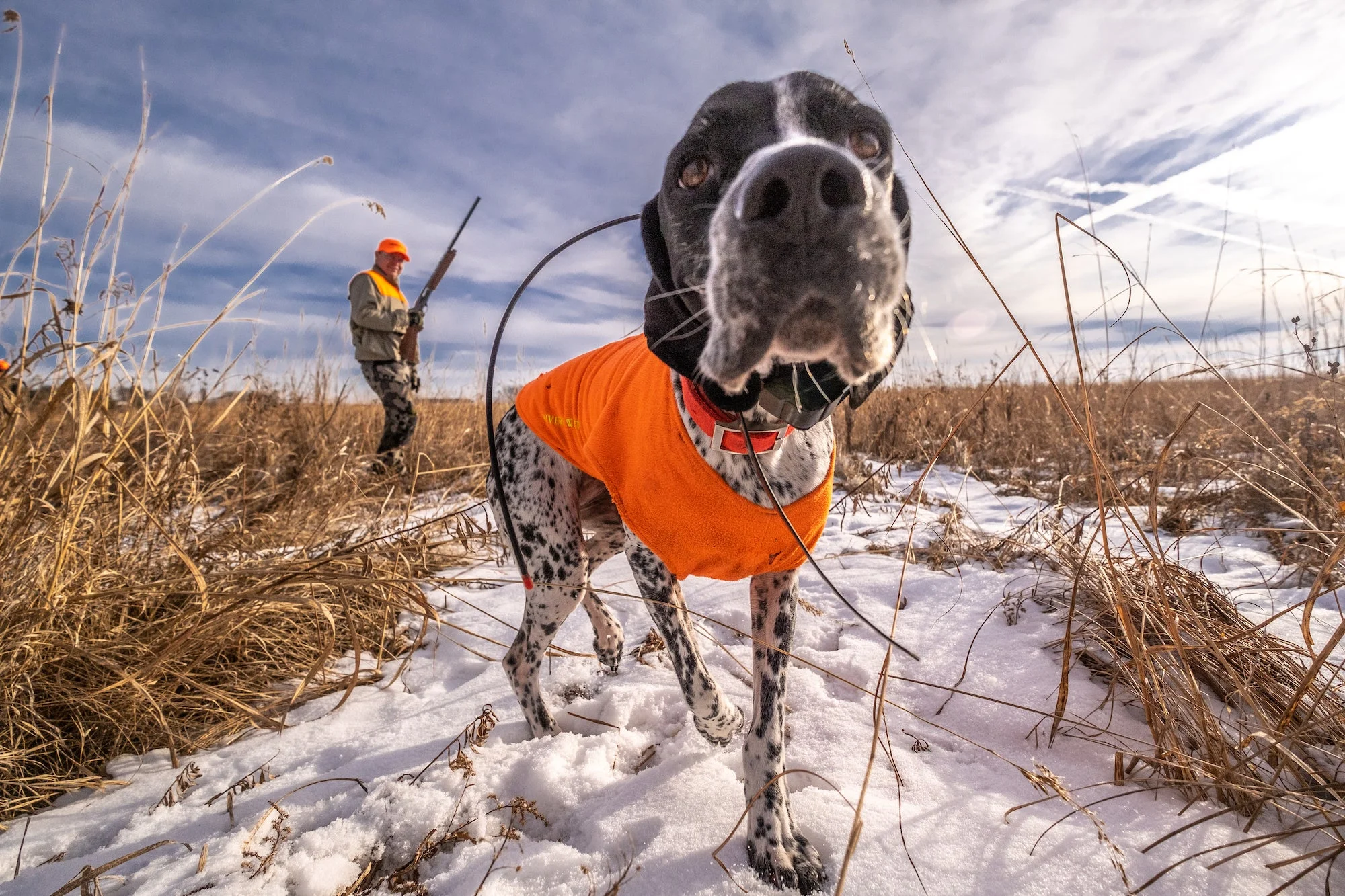
Hunting with a dog can be one of the most rewarding experiences for upland hunters. Federal Premium Ammunition
Pointers vs. Flushers
Upland dogs are divided between pointing breeds and flushing breeds. Flushers, like spaniels and all retriever breeds, find birds and roust them into air. Their body language gives you enough warning to be ready for most shots flushers produce. To be effective, a flushing dog has to work at very close range, and they favor slow-going, thorough hunters and those that hunt in big groups. They are good in very heavy cover, too. Flushing breeds make almost uniformly good retrievers, too.
Pointers—German shorthaired pointers, English pointers, Brittanies, setters, and others—freeze when they get close to game. The pointing behavior was originally bred into them before the advent of firearms. The dogs would point a covey of birds and the hunters would throw a net over the birds and the dog. Now, a pointing dog freezes, allowing the hunter to walk up, totally prepared for the shot. Pointing dogs have the edge over flushers in large areas because they can cover ground and if the birds are holding well for points (they don’t always), the hunter has time to walk up and take the shot.
Our Favorite Recipes for Upland Birds
Upland birds make great eating. The breast meat is white and tender. The legs are often dark. Prairie grouse and woodcock are the exceptions. They have dark breast meat, more like waterfowl, and are delicious if you cook them rare.
You can dress birds a few ways . Some hunters fillet only the breasts, which are the best part, and discard the rest. Some skin birds, keeping the thighs and legs as well, which takes very little time but wastes skin that can keep a bird moist during roasting. Or, you can pluck birds. Smaller birds take only a few minutes. A pheasant takes me about 20 minutes to pick. You do have to learn not to tear the skin, which can be fragile.
I like to roast a whole, picked pheasant, or spatchcock a quail and cook it under the broiler. Cutting birds up yields breast meat for frying, and legs that can either be fried, confitted, or slow-cooked
Frequently Asked Questions About Upland Hunting
What state has the best upland bird hunting?
Based on bird numbers and public opportunity, a few states can vie for the title “best upland hunting state.” For grouse and woodcock hunters, the Great Lakes states offer good bird numbers and countless acres of publicly accessible national, state, and county forests, many of which are actively logged in a way that enhances habitat.
North and South Dakota have state and federal lands that hold good numbers of pheasants, sharptails, and gray partridge. Both states also have walk-in programs that lease land from private owners and open them to hunting.
For variety, Idaho boasts vast amounts of public land and huntable populations of native ruffed grouse, blue grouse, sage grouse, sharp-tailed grouse, and mountain quail. It has pheasants and gray partridge, and is a top state for chukar hunting amid 12 million acres of Bureau of Land Management land.
How do you train a dog to hunt upland birds?
A dog with good, hunting bloodlines already knows how to hunt. Your job is teach it to hunt for you. That starts with obedience training, just as you would do with any dog. It progresses to exposing it to gunfire, then into teaching it to respond to commands in the field. Some dogs need to be trained to retrieve, while others retrieve naturally. Finally, a dog needs exposure to birds, both under controlled, training situations and through contact with wild birds.
What choke do you use for upland hunting?
Most shots at upland birds are fairly close. With ruffed grouse and woodcock, you often can’t see 40 yards in the brush, much less shoot that far. Other birds in more open cover sometimes give you long shots, especially birds like gray partridge, but by and large, an open choke like Improved Cylinder will fit the majority of upland bird hunting situations. A slightly tighter choke like Modified can extend your reach for spooky, wild-flushing birds or the longer shots you will see during big group pheasant hunts.

